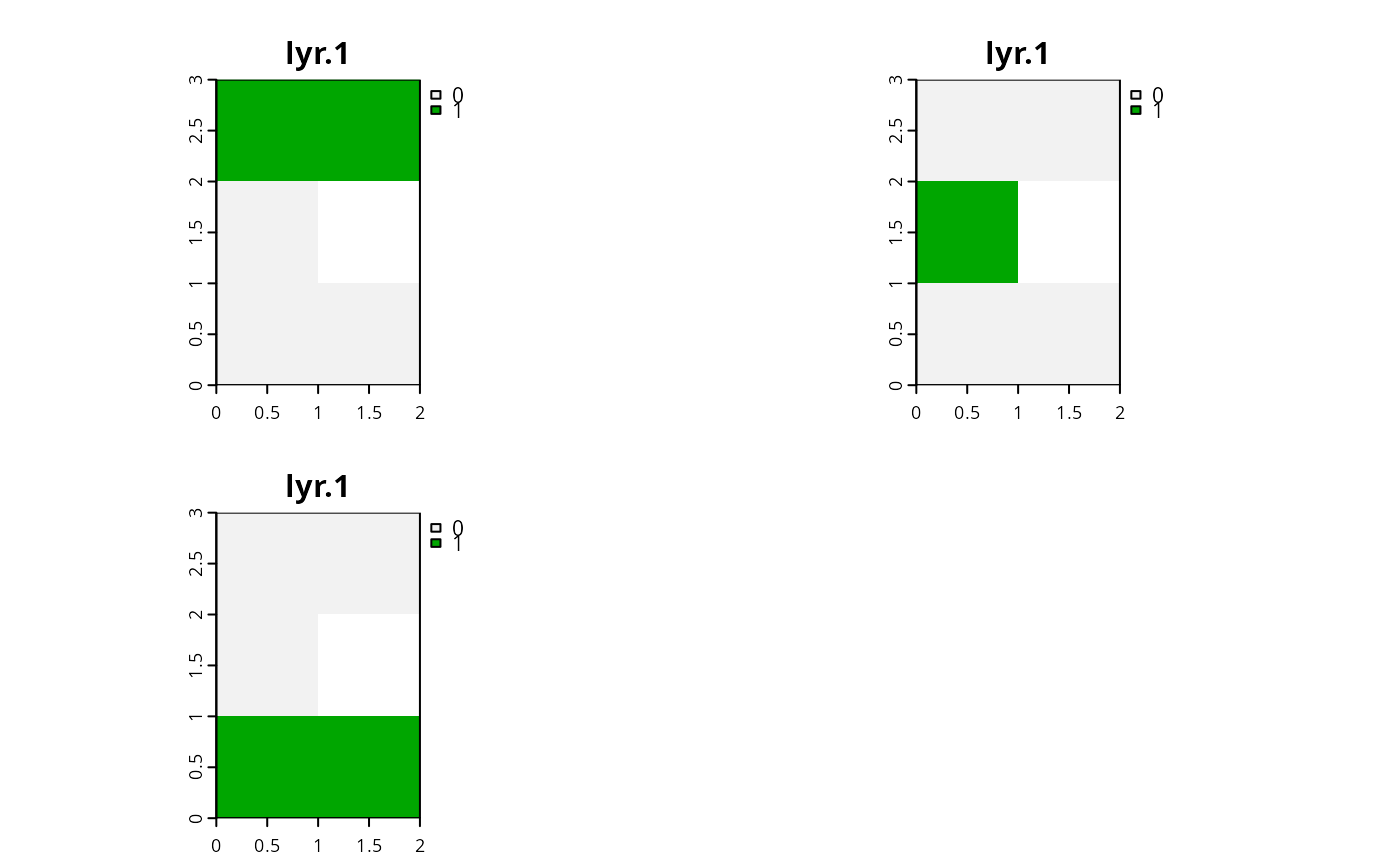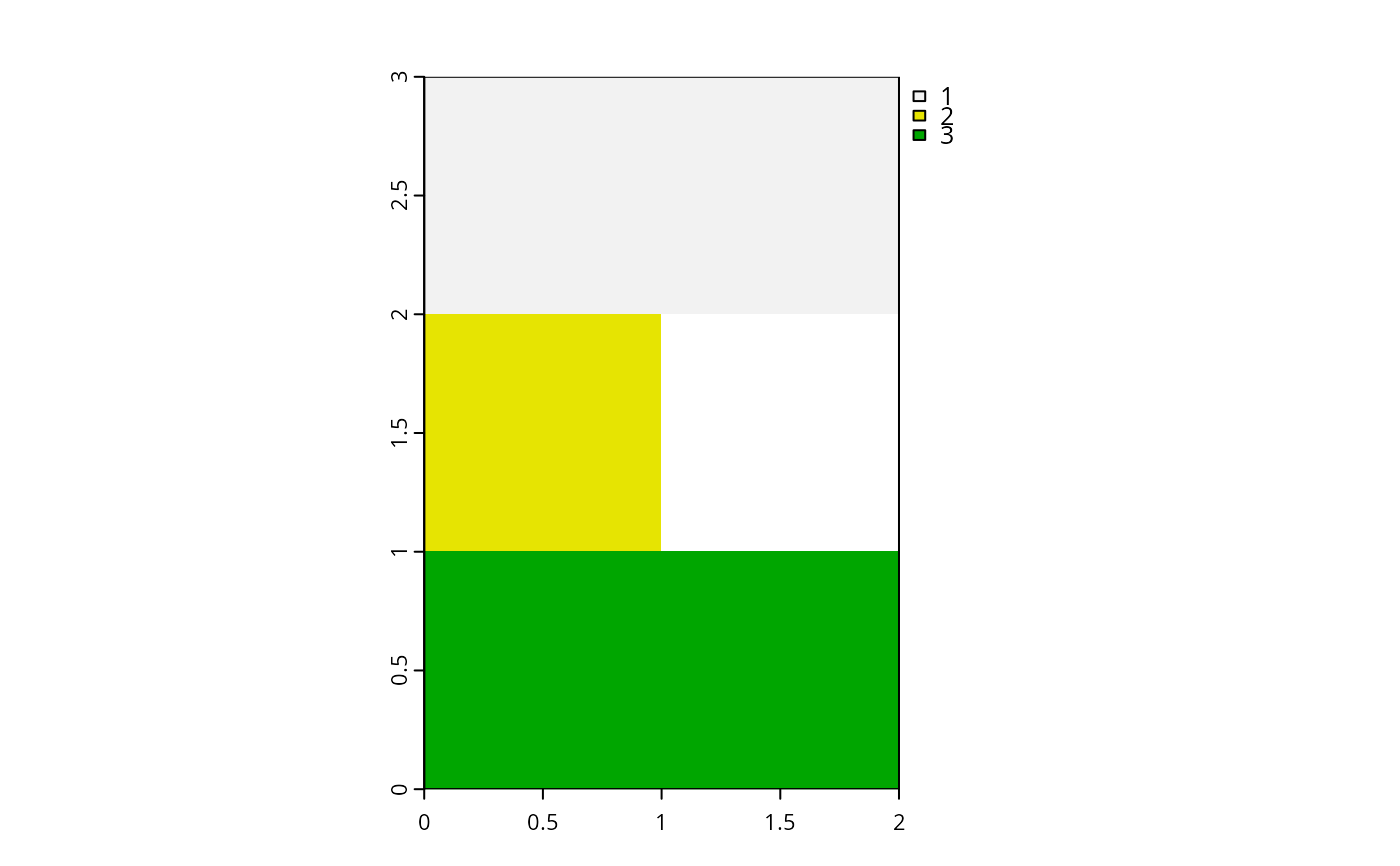Convert a multi-layer terra::rast() object into a single-layer
terra::rast() object where pixel values indicate which input layer
had the greatest value.
Usage
category_layer(x)
# S3 method for class 'Raster'
category_layer(x)
# Default S3 method
category_layer(x)Arguments
- x
terra::rast()object containing multiple layers.
Value
A terra::rast() object.
Details
This function is provided to help manage data that encompass
multiple management zones. For instance, this function may be helpful
for interpreting solutions for problems associated with multiple zones that
have binary decisions.
It is essentially a wrapper for terra::which.max().
See also
The binary_stack() function performs the reverse of this function.
Examples
# create a binary raster stack
x <- terra::rast(list(
terra::rast(matrix(c(1, 0, 0, 1, NA, 0), nrow = 3)),
terra::rast(matrix(c(0, 1, 0, 0, NA, 0), nrow = 3)),
terra::rast(matrix(c(0, 0, 1, 0, NA, 1), nrow = 3))
))
# plot data
plot(x)
 # convert to category layer
y <- category_layer(x)
# plot result
# \dontrun{
plot(y)
# convert to category layer
y <- category_layer(x)
# plot result
# \dontrun{
plot(y)
 # }
# }
